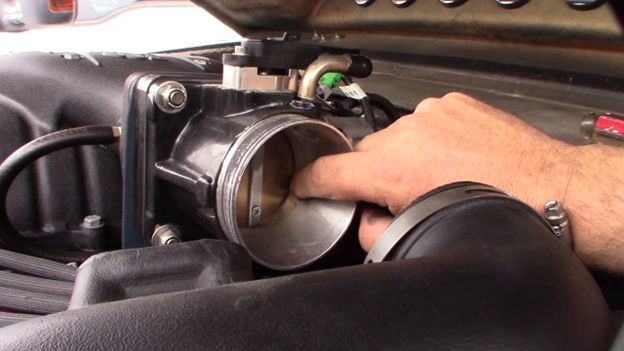Understanding and Addressing the Symptoms of a Faulty Idle Air Control Valve

A malfunctioning Idle Air Control (IAC) valve can lead to costly engine issues if not addressed promptly. However, there's no need to worry; here is a guide in identifying common symptoms of a bad IAC valve, diagnosing the issue, and addressing some frequently asked questions.
Identifying the Symptoms
When your vehicle's IAC valve is faulty, it can cause abnormal idle RPMs and several other problems. Here are the common symptoms to look out for:
1. Illuminated Check Engine Light
The IAC valve plays a crucial role in regulating air intake for your car's engine. When the Engine Control Unit (ECU) detects an issue with the IAC valve or air intake, it activates the Check Engine Light. However, this light doesn't provide specific information about the problem's nature. To diagnose it accurately, you'll need to read the trouble code registered by your car's ECU.
2. Irregular Idle Speed
The idle control valve regulates idle speed by allowing air to bypass the throttle plate. A malfunctioning IAC valve can disrupt this process, leading to abnormal engine idle speed, often referred to as "rough idle." If your engine speed fluctuates outside the typical range of 500-1000 RPMs, you likely have a rough idle. Note that a vacuum leak can also result in abnormal idle speed, causing similar symptoms.
3. Engine Stalling
When the IAC valve fails to allow enough air to bypass the throttle plate, it can result in combustion failure and engine stalling. This can occur suddenly, but in some cases, engine stalling is triggered by using electronic systems in the car, like the air conditioning, which can affect the engine load.
4. Backfiring
Backfiring occurs when fuel ignites outside the combustion chamber. A bad IAC valve can lead to a rich fuel mixture, causing excess unburnt fuel to escape into the exhaust and ignite, resulting in backfiring when you release the gas pedal to slow down.
5. Engine Starts, Then Dies
A faulty IAC valve can restrict oxygen supply to the engine, making combustion difficult or impossible. If combustion can't occur, the engine may stall shortly after starting.
Diagnosing and Addressing the Issue
While accessing the IAC valve can be challenging, it's advisable to have a mechanic diagnose and fix the problem to save time. Here's how a mechanic would handle a faulty IAC valve:
Diagnosing a Bad Idle Air Control Valve
To diagnose a bad IAC valve, a mechanic typically follows these steps:
1. Identify the diagnostic code: Connect an OBD2 scanner to the vehicle's computer system to read the error code.
2. Measure the electrical current: Attach a multimeter to each valve terminal and note the reading. Any reading outside the range of 0.00-0.05 may indicate a faulty idle control valve. If the valve is confirmed as bad, the mechanic will proceed to clean or replace it.
Cleaning the Idle Air Control Valve
Cleaning the IAC valve can sometimes resolve the issue. Here's how to clean it:
-
Locate the IAC valve and remove the intake hose from the throttle body.
-
Detach the vehicle's battery cable from the negative terminal.
-
Loosen the screws connecting the idle control valve to the throttle body.
-
Disconnect the electrical plug and wires.
-
Remove the hoses and clamps connected to the IAC valve.
-
Remove the gasket around the valve.
-
Use a carb cleaner to remove debris from the idle control valve, intake manifold, and throttle body.
-
Replace the gasket.
-
Reconnect the IAC valve to the throttle body, followed by the electric plug and hoses.
-
Reconnect the battery and run the vehicle to check if the idle issue is resolved. If the engine idle remains inconsistent, the valve may need replacement.
Replacing the Idle Air Control Valve
If cleaning doesn't resolve the issue, the idle control valve may need replacement. Here's how it's done:
-
Locate the IAC valve and remove any parts obstructing access to it.
-
Unplug the electrical connector.
-
Remove the old gasket and idle air control valve.
-
Attach the new idle control valve to the throttle body.
-
Reconnect the electrical connector and any other removed components.
By addressing these steps, you can potentially resolve issues with your IAC valve and ensure your vehicle operates smoothly.